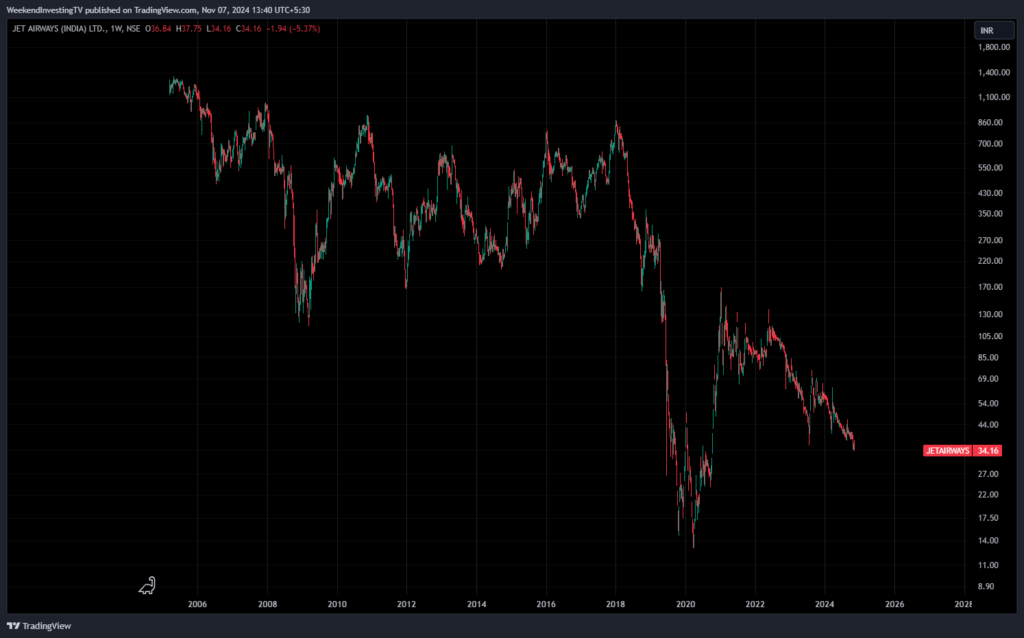The Rise and Fall of Jet Airways Stock
Jet Airways, once a prominent airline in India, has had a turbulent journey in the stock market. For those who have followed its story, the airline has faced many difficulties over the years. In its early days, the stock price of Jet Airways was around ₹1,400 when it was first listed in the market. However, things did not go as planned.

A Sharp Decline in Jet Airways Stock
The stock initially saw a rise, climbing to ₹2,000. But soon after, it experienced a massive drop. The price plunged by 90%, falling to around ₹130. From there, the stock fluctuated wildly, moving between ₹130 and ₹800. Eventually, it settled around ₹900 before things took a turn for the worse. When its owner left the country, the stock began to collapse, dropping drastically.
Jet Airways’ Struggle During COVID-19
During the COVID-19 pandemic, the stock of Jet Airways dropped to as low as ₹10 to ₹12. While many people expected a resolution due to an ongoing process with the National Company Law Tribunal (NCLT), the stock saw a brief rally. It surged from ₹13 to ₹14, eventually reaching ₹140 to ₹150. However, this was short-lived, and the stock began to lose value again, falling to ₹34 today. The Supreme Court has ordered its full liquidation, meaning that shareholders are likely to receive nothing, and the stock’s value could drop to zero.
Opportunities for Investors Along the Way
Though Jet Airways struggled for years, there were still opportunities for investors who acted at the right time. For those who identified the stock’s value at the right moments, there were chances to buy at low prices and sell at higher levels. However, this required excellent timing and an understanding of market conditions. It’s easy to look back and think about what could have been done, but the reality is that this stock has not shown any sustained upward momentum.
A Lesson in Avoiding Declining Stocks
One of the key takeaways from the story of Jet Airways is that it doesn’t make sense to hold onto a stock that is continuously declining, hoping that it will recover one day. Waiting for a stock to rise after it has been in a downtrend for years can waste both time and money. It’s important to invest in stocks that show upward momentum and are on a positive trajectory.
Choose Stocks That Are Moving Forward
Investing in stocks can be compared to traveling. Imagine you are at a bus stop, and there are buses going to different places. Some buses are moving, while others are standing still. It wouldn’t make sense to get on a stationary bus, unsure of when or if it will start moving. Similarly, when investing, it’s wiser to choose stocks that are already moving in the right direction. This approach can help investors reach their financial goals more efficiently.
WeekendInvesting launches – PortfolioMomentum Report
Momentum Score: See what percentage of your portfolio is in high vs. low momentum stocks, giving you a snapshot of its performance and health.
Weightage Skew: Discover if certain stocks are dominating your portfolio, affecting its performance and risk balance.
Why it matters
Weak momentum stocks can limit your gains, while high momentum stocks improve capital allocation, enhancing your chances of superior performance.
Disclaimers and disclosures : https://tinyurl.com/2763eyaz
If you have any questions, please write to support@weekendinvesting.com










